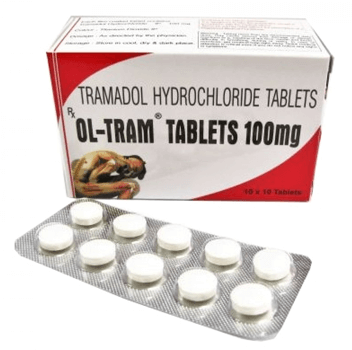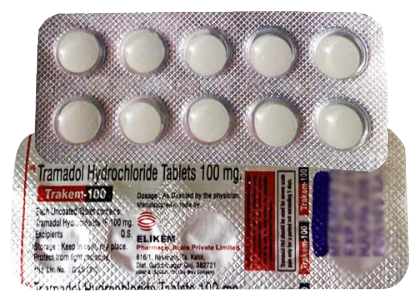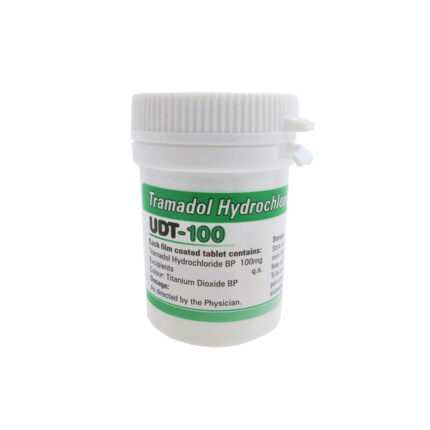What is Tramadol?
Buy Tramadol Online Europe, Mail Order Tramadol Online Germany Without Prescriptions. Tramadol is a synthetic opioid analgesic, primarily used in the medical field for the treatment of moderate to severe pain. It functions both as a typical opioid and as a serotonin-norepinephrine reuptake inhibitor (SNRI). Tramadol’s dual mechanism of action makes it unique among opioids, as it not only alters the perception of pain in the body by binding to the mu-opioid receptors but also affects neurotransmitters involved in pain modulation.
Developed in the 1960s by German scientists, tramadol was introduced into the market as ‘Tramal.’ It gained approval for medical use in the United States and the United Kingdom in the mid-1990s. Since then, tramadol has been widely prescribed for various pain-related conditions, including postoperative pain, neuropathic pain, and certain cases of chronic pain disorders such as fibromyalgia, though it’s not FDA-approved for this particular condition. Buy Tramadol Online Europe
Medical Uses of Tramadol
In the United Kingdom, tramadol is primarily used for the management of moderate to severe pain, both in acute and chronic conditions. The versatility of tramadol, stemming from its unique mechanism as an opioid agonist and SNRI, makes it an effective option for various types of pain, including but not limited to post-surgical pain, osteoarthritis, and neuropathic pain.
Tramadol is particularly beneficial in cases where non-opioid painkillers, such as NSAIDs (Non-Steroidal Anti-Inflammatory Drugs) or acetaminophen, have proven inadequate. Its effectiveness in treating pain related to nerve damage or neuropathy is notable due to its impact on neurotransmitters like serotonin and norepinephrine, which play a role in how pain is perceived and managed by the body.
Moreover, tramadol’s use extends to the management of pain in conditions like fibromyalgia, a chronic condition characterized by widespread musculoskeletal pain. Its role in fibromyalgia treatment is typically as a secondary painkiller, prescribed when first-line treatments are ineffective.
Citra 100mg
Royal Tramadol 225 mg
Trakem 100mg
UDT-100mg Tramadol
What forms of Tramadol are available? Tramadol is available in several forms and dosages to accommodate different pain management needs. The most common forms include:
- Immediate-Release (IR) Tablets: These are typically available in 50 mg doses and are used for managing acute pain. They start working relatively quickly after ingestion.
- Extended-Release (ER) Tablets and Capsules: Available in various strengths (such as 100 mg, 200 mg, and 300 mg), these are designed for chronic pain management, providing a steady release of tramadol over an extended period.
- Oral Drops, Suppositories, and Injections: These formulations are less common and are usually reserved for specific medical conditions or patient needs.
What Are the Recommended Dosage and Administration Guidelines for Tramadol? The dosage and administration of tramadol vary depending on the formulation and the individual patient's needs. For acute pain, immediate-release (IR) tramadol is commonly used, starting at a lower dose and adjusting as needed. Chronic pain management typically involves extended-release (ER) tablets or capsules, which provide a steady release of the medication over a longer period. Immediate-Release Formulation: For adults and adolescents over 17, the usual initial dose is 50 to 100 mg every 4 to 6 hours as needed for pain relief. The dosage can be adjusted but should not exceed 400 mg per day. Extended-Release Formulation: For adults who are not currently taking tramadol IR, the starting dose of ER tramadol is typically 100 mg once daily. This can be gradually increased, with careful monitoring, to an effective dose that minimizes adverse reactions. The maximum recommended dose is usually 300 mg per day. It's essential for patients to follow the prescribed dosing schedule closely. Taking tramadol more frequently or in higher doses than prescribed can increase the risk of side effects, including dependency and overdose. For elderly patients or those with liver or kidney impairment, doses may need to be adjusted lower to reduce the risk of adverse effects. Tramadol should be taken with or without food, but consistently in the same manner for each dose. The tablets should not be crushed, split, or chewed, particularly the extended-release formulations, as this can lead to rapid release and absorption of a potentially fatal dose.
Guidelines for Safe Use Ensuring the safe use of tramadol is crucial due to its potential for addiction and other serious side effects. Patients should adhere to the following guidelines:
- Follow Prescriptions Carefully: Always use tramadol exactly as prescribed by a healthcare professional. Do not take it in larger amounts, more frequently, or for a longer duration than instructed.
- Monitor for Side Effects: Be aware of the potential side effects of tramadol, including dizziness, nausea, and the risk of serotonin syndrome.
- Avoid Alcohol and Certain Medications: Do not consume alcohol while taking tramadol, as it can increase the risk of respiratory depression. Also, avoid using other central nervous system depressants or medications that interact negatively with tramadol.
- Do Not Share or Divert Medication: Tramadol should never be shared with others, especially those with a history of substance misuse or addiction.
- Store Safely: Keep tramadol in a secure place, out of reach of children and others who might misuse it.
- Proper Disposal: Dispose of unused tramadol properly to prevent misuse. Follow local guidelines for the disposal of prescription medications.
- Gradual Discontinuation: If there is a need to stop using tramadol, it should be done gradually under medical supervision to avoid withdrawal symptoms.
- Regular Medical Review: Regularly review the need for continued tramadol therapy with a healthcare provider, especially for long-term use.
Are There Any Side Effects or Risks Associated with Using Tramadol? Tramadol can cause side effects, which vary in severity and frequency among different individuals. Some common side effects associated with tramadol include:
- Nausea and vomiting
- Constipation
- Dizziness and lightheadedness
- Drowsiness
- Headache
- Dry mouth
- Sweating
- Respiratory depression: As with other opioids, tramadol can depress breathing, which is particularly dangerous at high doses or when combined with other substances that depress respiration.
- Increased risk of serotonin syndrome: Because tramadol increases serotonin levels, it can potentially lead to serotonin syndrome, a rare but serious condition caused by excessive levels of serotonin in the brain.
- Seizures: Tramadol can increase the risk of seizures, especially at high doses or when taken with other medications that lower the seizure threshold.
- Addiction and dependence: Despite being less potent than other opioids, tramadol carries a risk of addiction and dependence, particularly with long-term use.
- Withdrawal symptoms: Discontinuing tramadol abruptly can lead to withdrawal symptoms, such as anxiety, sweating, insomnia, rigors, pain, nausea, tremors, diarrhea, upper respiratory symptoms, piloerection, and rarely hallucinations.






